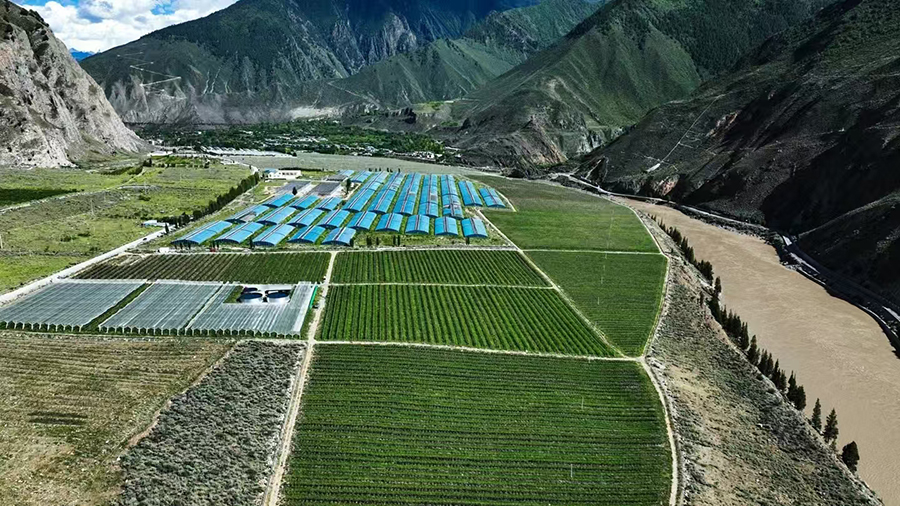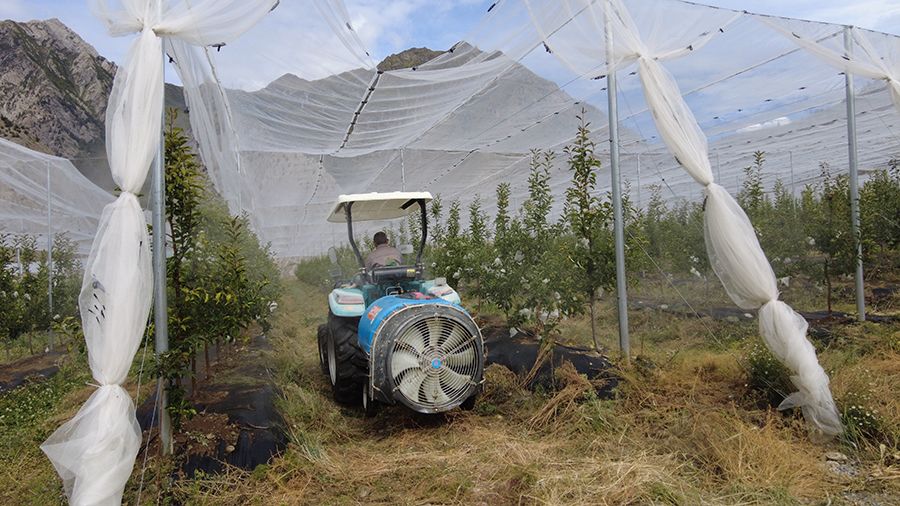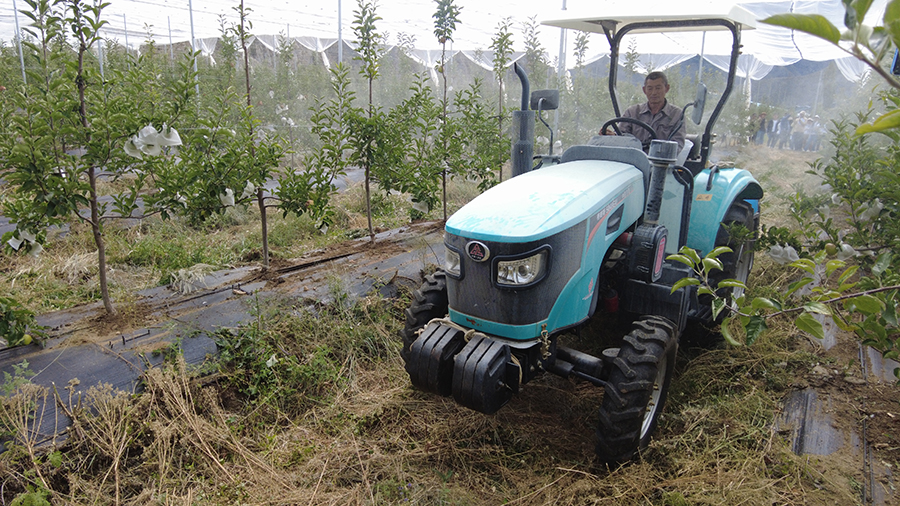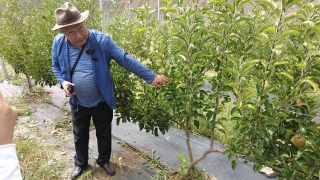With the assistance of drip irrigation technologies, authorities in Nang county, Xizang autonomous region, have successfully transformed vast pebble beaches along the Yarlung Zangbo River into a flourishing apple orchard.
Leveraging the abundant heat and light resources of the arid Qinghai-Tibet plateau, the county is aiming to supply apples to high-end markets in wealthier eastern provinces and international markets like Nepal.
The 30-hectare orchard, divided into 13 zones, is being watered in sequence through a network of tubes that deliver a mix of water and fertilizer directly to the tree roots, said Yang Wei, the general manager of Dashan Agriculture Technology Co, the orchard's operator.
"We have been collecting meltwater from the nearby mountains and storing it in tanks for irrigation purposes," he said.
Attracted by substantial government subsidies, Dashan Agriculture ventured into apple cultivation in the warm, humid river valley last year. The region benefits from extended sunlight hours and significant temperature fluctuations between day and night, ideal for producing exceptionally sweet apples.
In a departure from traditional open-air orchards managed by small-scale farmers, Dashan Agriculture's innovative approach involves closely planting dwarf apple trees in rows, precisely spaced to accommodate tractors equipped with pesticide sprayers. Protective netted shelters have been erected above to shield the trees from potential threats like hail, sun, wind, and birds.
This project has completely transformed the landscape along the riverbank.
Speaking to a group of visitors recently, Yang said the soil beneath his feet used to be pebble beaches covered with large rocks. "As the trees grow taller, they reduce evaporation, which in turn promotes the growth of grass between the rows. After we clear the grass, it transforms into organic fertilizer. This process, repeated year after year, will eventually transform the land into fertile soil rich in organic matter," he explained.
Yang estimated that the orchard is expected to yield approximately 7.5 metric tons of apples per hectare this year, increasing to between 45 and 60 tons per hectare by 2026 when trees mature.
While there is an abundance of inexpensive labor available for tasks like weeding and apple picking, Yang pointed out a current shortage of skilled workers crucial for maintaining quality standards. Consequently, technicians need to be sourced from eastern provinces, leading to increased costs.
Yang said that the presence of the orchard in Nang county presents an opportunity to cultivate a local workforce of "industrial workers" who can enhance the quality of local apple production and promote a "courtyard economy" concept. Skilled farmers can grow apples in their own yards, meeting specific standards, and then supply them to companies like Dashan Agriculture, thereby boosting local income.
However, the company is already taking steps to reduce its future reliance on any workers, who are likely to become more expensive due to an aging population.
"In Shandong province where I used to work, many skilled workers are over 60," he said.
He has planted a small patch of an apple tree variety commonly used in countries with high labor costs. It features a flat, fan-shaped crown, making it well-suited for mechanized harvesting and trimming, thereby reducing the necessity for manual labor.
Additionally, he is conducting research on the use of chemicals to thin fruit and flowers, further decreasing the labor required.
"These are the future of farming. While we still have workers now, what about tomorrow?" he pondered.










